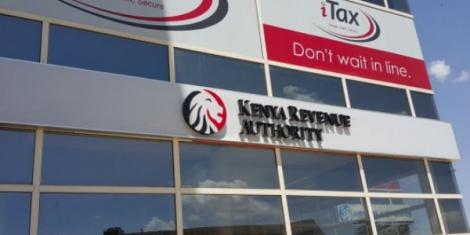Business
KRA Smacks Used Car Imports with More Taxes

After lowering the maximum depreciation rate from 70% to 65% of the vehicle’s value, the Kenya Revenue Authority (KRA) has struck importers of old cars with a new wave of tax increases.
The KRA staff has been told to implement a new depreciation rate schedule for cars as of Friday by Pamela Ahago, acting commissioner for the Customs and Border Control division.
Due to Kenya’s eight-year age limit on used cars, the directive will result in a tax increase of more than 14 percent for vehicles made in 2016. These vehicles are now primarily imported by dealers.
It will increase the value used for calculating import duty to reduce the maximum depreciation rate, which the taxman claims is in line with other nations in the seven-nation East African Community trading bloc.
Due to the value being compounded for taxation, an increase in import duty has a comparable effect on excise duty and value-added tax.
The implementation of the new value schedule, according to Ms. Ahago, is in accordance with a directive issued by President William Ruto on July 29 during a stakeholder engagement session held at the Port of Mombasa, instructing the KRA to “harmonize the valuation parameters of used motor vehicle units.”
In a message to staff on August 29, she stated, “In accordance with this [Ruto’s] directive, Kenya Customs will apply the depreciation schedule…that was adopted by the East African Community Council of Ministers.” On September 1, 2023, “all staff are required to abide by this valuation.”
A car’s value decreases over time owing to normal wear and tear starting from the moment it was constructed, hence the value is reduced for taxation reasons up to a maximum of eight years.
The projected tax payment for an importer of a Toyota Premio with a current retail selling price (CRSP) of Sh3.27 million will increase from Sh939,221 to an estimated Sh1.096 million as of this Friday.
This is an increase in import, excise, and VAT fees of Sh156,537, or roughly 14.29 percent, excluding import declaration costs and the railway development levy.
According to dealers, the higher expenses will probably be passed along to customers. Because the excise charge varies depending on the engine size from 20 to 35 percent of the customs value and import duty, the preceding value implies that the car’s engine has a capacity of 1800cc.
“There’s definitely going to be an upward adjustment in [used car] prices,” Charles Munyori, the secretary-general of the Kenya Auto Bazaar Association (Kaba), which represents used car dealers, told one local daily.
“This is because the use of 65 percent depreciation as opposed to the current 70 percent means there’s going to be an extra five percent [of the value of the vehicle] that is going to be added when calculating the [import] duty.”
However, the used car dealers backed the decision to apply the vehicle’s initial year of registration under the new schedule rather than the first month of registration that the KRA had previously utilized for taxation purposes.
Unlike before, when the tax may vary depending on the month the automobile was produced, Mr. Munyori said the new schedule assures importers pay identical duty for vehicles of the same class provided they were manufactured in the same year.
“What has happened is that if a car was manufactured in 2016 either January or December, you pay the same duty. That is the only thing that they [KRA] have rectified, but now the duty has gone up because they have limited the depreciation value,” he said.
“What is going to happen with the switch to using year of registration is that we expect increased availability of the vehicles because you have a whole year to choose when to import unlike previously when we were limited because the duty for a vehicle could change based on the month they arrive.”
After import duty increased from 25% to 35% in July, the latest development has paved the way for another round of price rises for used cars, which make up more than 75% of the cars on Kenyan roads.
Dealers and manufacturers of automobiles had already increased car prices, citing shilling depreciation, a decline in the importation of secondhand cars, and higher borrowing expenses.
Following the disruption brought on by the Covid-induced shocks, especially the lack of semiconductors, an essential part of contemporary vehicles, global auto production has slowed down.
On the other hand, since the start of the year, the value of the shilling has decreased by around 17.9% against the US dollar.
Even before the levy on finished units was implemented, the increasing cost of operation had caused the dealers and manufacturers of new vehicles to raise prices in order to cover the costs and safeguard profits.











